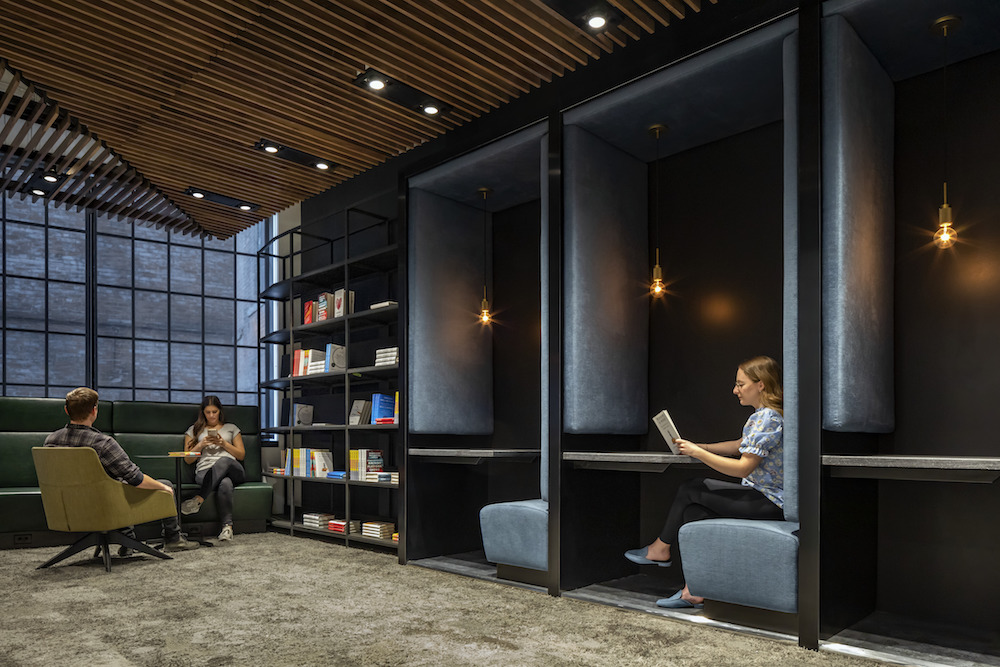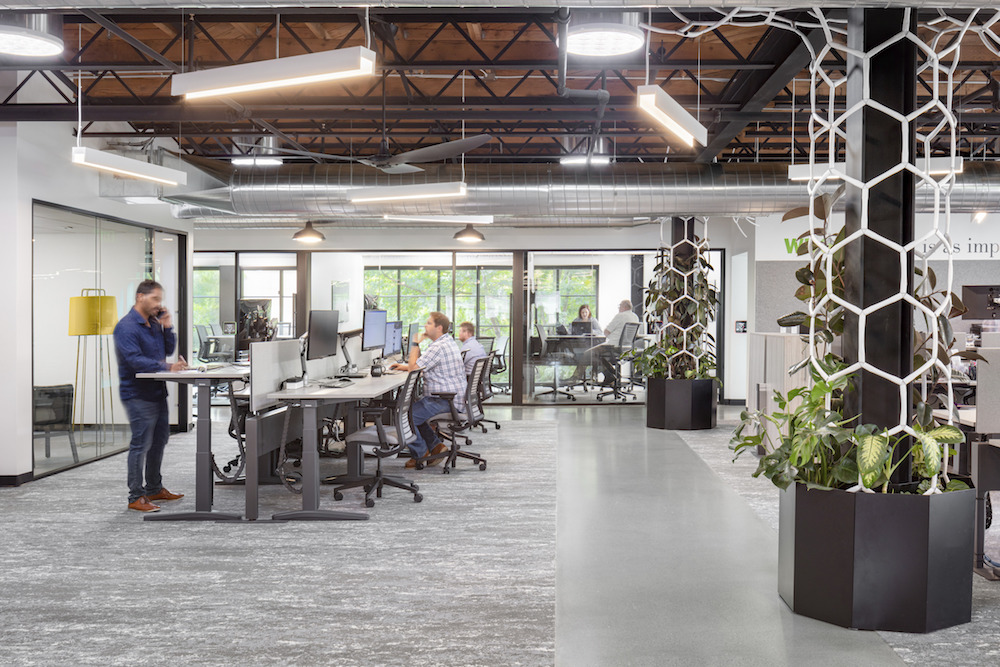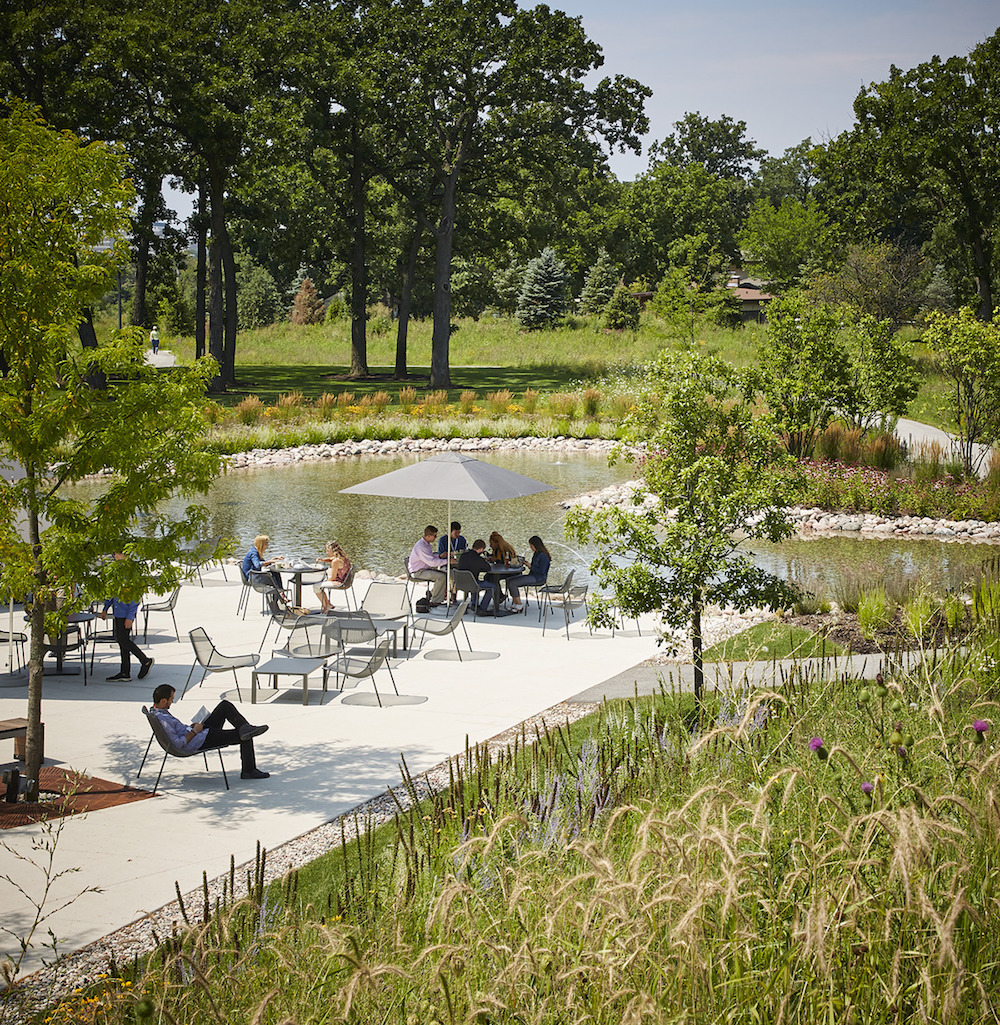SmithGroup’s Kendra Kettelhut explores how we can take workplace wellbeing to the next level.

Recent global and societal issues have underscored the critical importance and impact that physical and mental health and wellbeing play in our lives. So, it should come as no surprise that these drivers have become the most vital components shaping the future of work and the spaces we design.
According to a Mental Health America workplace health survey that ran from February through September of 2020, nearly 9 in 10 employees reported that workplace stress affected their mental health. Additionally, 85-percent of respondents agreed (somewhat to strongly agreed) that workplace stress affected their mental health.

Some contend that the rise in work-related stress and its impact on mental health can be traced back to 1980s, when the world began to shift from a predominately manufacturing-driven economy to a more service-based marketplace. It was during this era that people replaced machines as a company’s greatest focus and investment. It is also when we saw a shift in perceptions, awareness and understanding regarding how work and the workplace affect and contribute to wellbeing and the human experience. The result: A rise in how companies prioritize their culture, brand and office environments, as well as a heightened awareness regarding wellness and the employee experience.
The most notable indicator of these changes in mindset and priorities is evidenced in the evolution of office design, as companies traded seas of cubicles and high-tower private suites for beautifully branded, open, collaborative spaces to accommodate a variety of tasks. Today, many organizations already offer employees a range of options to support everything from focused work, team-based activities, collaboration and learning, to so much more. In some cases, designers and firms have gone even further by adopting the WELL Building standard as baseline criteria to guide design decisions. This drove a rise in design solutions that incorporate more daylight and biophilic features, and which encourage movement and socialization to promote healthier environments and occupant behaviors. How, then, do we take workplace wellbeing to the next level?

Reimagining…Everything
Though COVID-19 forced much of the world’s workforce into an (initially) uncomfortable and unfamiliar state of remote work, it also afforded industries across the globe a unique, once-in-a-generation opportunity to rethink just about all facets of work and workplace design. As part of this revolution, much focus has been placed on factors that substantially impact mental wellbeing, including individual workstyle preferences, productivity, transparency, as well as empathy and flexibility within the world of work. However, according to a survey done by digital workplace Caromentis in February of 2021, only seven percent of knowledge workers want to go back to full-time office work. Additionally, almost three-quarters (73%) desire a split between working at home and in the office. So, what does this mean for companies looking to entice their workforces to return to the office? And why are so many employees still hesitant to return to the office?

Build Back Better
In 2019, Dynamic Signal shared research stating that 80-percent of U.S. workers experienced stress due to ineffective company communication. This is critically important and must be remedied, as communication helps to foster interpersonal connectivity, which is foundational to cultivating culture, safety and wellbeing within a workplace. Transparency, trust, empathy and open lines of (regular) communication are also critical to fortifying employee engagement, enhancing retention and reducing stress levels within any organization. As companies attempt to transition back to office-centric work, these factors will be even more critical to ensuring a smooth changeover.
Garnering employee support and buy-in will be equally important to the transition process. Partnering with staff, acknowledging their concerns, and providing them opportunities to participate in decisions that affect an array of work-related and wellbeing factors will help to soften the return to the office.
As human beings, we also have an innate need to be heard, to be seen and to be acknowledged for our efforts. A study reported by GoRemotely states that “employees who are recognized are 4.6 times more likely to perform their best work.” Companies looking for new or additional opportunities to improve communications and strengthen support for employees don’t have to go it alone. Consulting and training agencies can be enlisted to help leaders and managers hone techniques and become skilled at providing emotional support within the workplace. Employee sharing platforms or weekly check-ins have also proved successful, affording staff a safe venue to connect with colleagues and discuss issues — both work-related or pertaining to happenings outside the office — that may be weighing on their minds or impacting day-to-day interactions. Modifying or developing protocols that help to enhance empathy, increase recognition and celebrate individuals or teams for jobs well done will also help employees feel valued and validated.

Flexibility is Still Key
Moving forward, flexibility will remain critical to protecting and supporting workforce wellbeing. In fact, data collected by GoRemotely indicates that more than 60-percent of job candidates rank flexible work arrangements as key components in attracting them to a company. Studying and expanding upon feedback collected from staff will enable organizational leaders to better understand employees’ greatest concerns regarding stress, wellness, productivity and work/life balance — which all impact wellbeing. New and regularly issued surveys can offer teammates additional opportunities to identify preferences and offer input on a variety of work-related topics and issues. Organizations that allow employees to weigh in on and adopt modalities that best align with their needs—such as working at home vs. in the office or flexible scheduling of hours—while adhering to a range of established parameters will see positive gains. Not only do these offerings empower employees, but the added flexibility and choice will further help to reduce stress, encourage productivity and boost mental wellbeing—all of which have a positive impact on the company’s bottom line.

Spaced Out
While we are sure to see a rise in hybrid work modalities that extends far into the future, the physical office will not be a thing of the past. Utilizing staff input to understand how employees work best, organizations can partner with designers to assess existing office layout and explore space-based modifications to facilitate a range of workstyle needs and preferences for times when in-office work is desired. Workplace design and planning experts are increasingly partnering with clients to reduce or eliminate assigned seating and provide a greater variety of space typologies—such as added focus rooms, collaboration areas, destination spaces and outdoor amenities—to promote wellbeing while balancing adjusted space utilization needs in a new era of work.

Be Well
Employees are the heartbeat of an organization. Certainly, operations, profitability and productivity are crucial to a company’s viability, but in the lifecycle of a business, successes and failures ultimately circle back to employees. Why then has it taken us so long to understand the impact and importance that personal wellbeing plays within this ecosystem? Communication, transparency, empathy and flexibility are all critical components within our companies. If organizations are to remain successful, workforce wellbeing can no longer be treated as superficial or a trend that can be addressed today and forgotten tomorrow. Rather, meaningful attention to mental, physical and emotional wellbeing must become woven into a company’s culture, values and DNA as a prioritized norm, now and well into the future.

